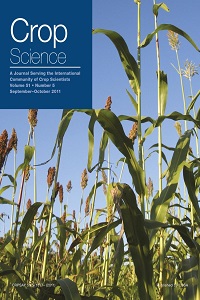Genetic Diversity among Common Bean Breeding Lines developed for Central America
A study was undertaken to estimate the relative degree of genetic diversity among lines of common bean (Phaseolus vulgaris L.) selected in Central America for BGMV resistance vs. lines that had no selection. Genetic distance (GD) based on the presence or absence of random amplified polymorphic DNA (RAPD) bands was estimated among breeding lines and cultivars of red and black beans. Another six black-seeded cultivars from Brazil and Argentina were included for comparison. The multidimensional scaling plots revealed that the red and black beans in this study formed distinct clusters with no overlap. Based on consistency of marker frequencies within vs. between populations, reds and blacks were confirmed to be distinct populations. The mean RAPD marker diversity measured among lines selected for resistance was significantly less than that among unselected lines in reds (0.140 vs. 0.224) and blacks (0.170 vs. 0.223). Coeffecients of parentage (CP) were also utilized to estimate the relationships among selected and unselected lines. Selected lines displayed significantly larger CP than unselected lines in both reds (0.29 vs. 0.06***) and blacks (0.13 vs. 0.05***), reflecting closer genetic relationships and reduced diversity. Therefore, both molecular markers and CP indicated that selection for resistance had reduced genetic variability in both red and black beans. When CP were correlated with GD for reds, blacks, and all genotypes, correlations of −0.35***, −0.38***, and −0.36*** resulted, respectively. In spite of low correlation values, GD and CP presented similar tendencies. The choice of GD or CP as a measure of genetic relationship may depend on the quantity and quality of pedigree information available.

